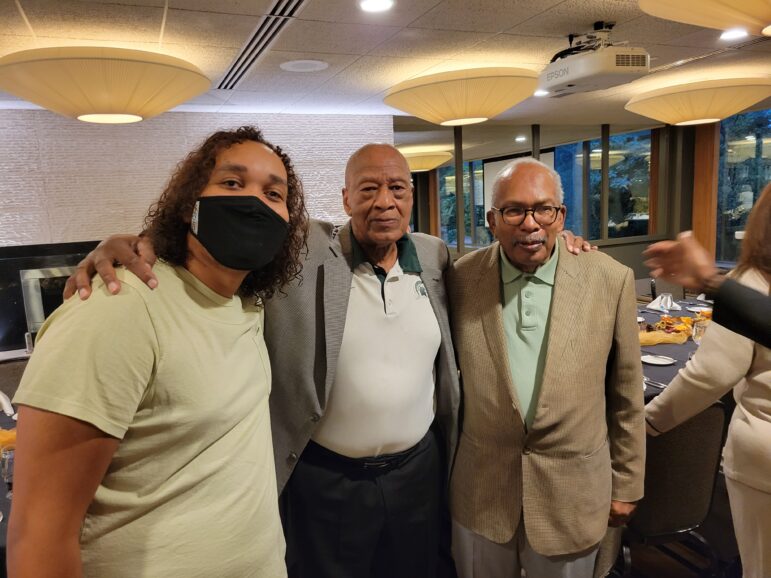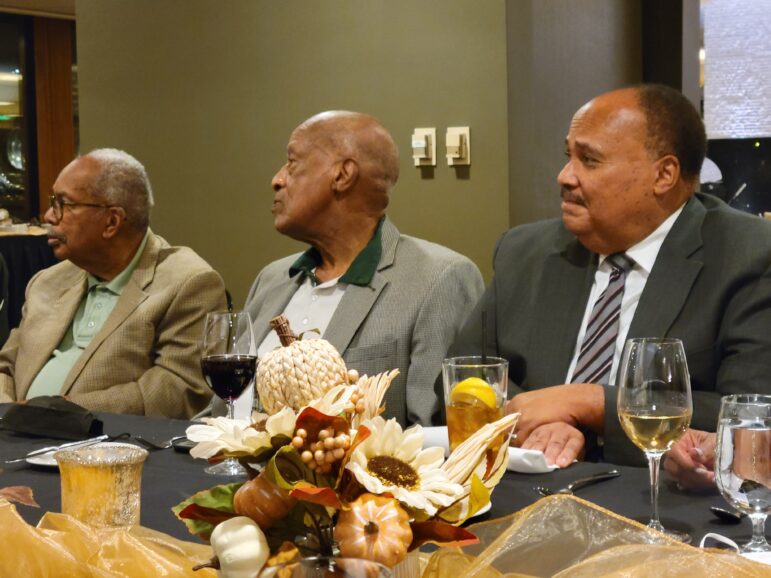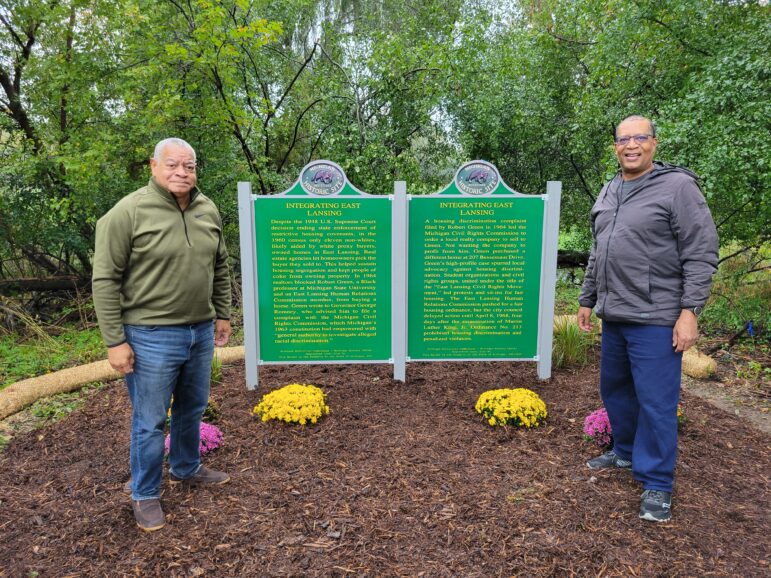Vincent Green, a practicing East Lansing attorney, has been enveloped by leaders in the civil rights movement his entire life.
Green is the son of East Lansing civil rights activist Robert L. Green, who fought for fair housing and was in 1964 the first Black person to purchase a home in East Lansing. Robert Green became the first Black dean at Michigan State University and worked alongside Martin Luther King, Jr. from 1965 to 1967.
“Our close contact with people like Ernie Green and the King family has just been part of our lives,” Green said. “I’m not saying it’s not important, but it’s nothing we brag about.”
Growing up among leaders in the civil rights movement was a normal part of life, Green said. “We always joked that Mom would have all the nice cars but Dad would still drive a moped.”

Kurt Green
Dr. Robert L. Green (middle) with his grandson (left) and Ernest Green of the Little Rock Nine (right) at a luncheon leading up to Green Elementary’s renaming ceremony. Image: Kurt Green
Kurt Green
Ernest Green (left), Dr. Robert L. Green (middle) and Martin Luther King III (right) sit together at a luncheon leading up to the Green Elementary renaming ceremony. Image: Kurt GreenWhen the Greens purchased their home in the Pinecrest neighborhood in 1964, Green was just 7. His father was a professor in the James Madison College at Michigan State. Green said his father’s students made his achievements known in the community.
On Sept. 24 this year, 60 years after the civil rights movement, Pinecrest Elementary was officially renamed Dr. Robert L. Green Elementary in commemoration of Robert Green’s achievements.
“I’m glad my dad’s name finally got out there,” Green said. “We knew at some point he would get recognized. But we let others do it because we think it was important for someone else to bring it forward.”

Kurt Green
Vincent Green (left) stands with his brother, Kurt Green (right), in front of the plaque erected in front of the Green family home. Image: Kurt GreenThe Green family let the school board and the Dr. Robert L. Green Commission undertake the commemorative project, though Green, his brothers and Robert Green himself were involved in City Council meetings and ceremonies.
Terah Chambers, East Lansing Public Schools Board of Education president and associate dean for equity and inclusion at Michigan State, said Robert Green is enthusiastic to remain engaged with the community. “It was clear to me that he is very keen to be involved in any way he can because he understands how important this work is and the legacy of keeping that alive,” she said. “He’s a civil rights warrior. He’s going to continue to forward that mission in any way he can.”
Like his father, Green said he is on a mission himself — the school’s renaming has been a way for him to preserve his father’s legacy. “I will get done with a case and the judge will say, ‘Attorney Green, we just want to let you know how proud we are of your dad and your family.’”
Green said he plans to speak at the elementary school at least every year. “We want to make sure that the message is really carried on about the name and what it means. Still to this day we’re getting it out.”
The message behind the renaming of Green Elementary has spread far, Chambers said. “We got several emails from alums of East Lansing. One of them who lives in New Jersey said they had no idea. Everyone just thinks it’s really great.”
The word ‘Pinecrest’ has been removed from the school building and the school is in the process of ordering new lettering, said Robert L. Green Elementary Community Council President Rachel Perez. Like the school itself, the community council is still transitioning its online information to reflect the name change.
Seeing his father’s legacy reflected, Vincent Green said, “To drive by Green Elementary School. Wow. I still get tears in my eyes.”

